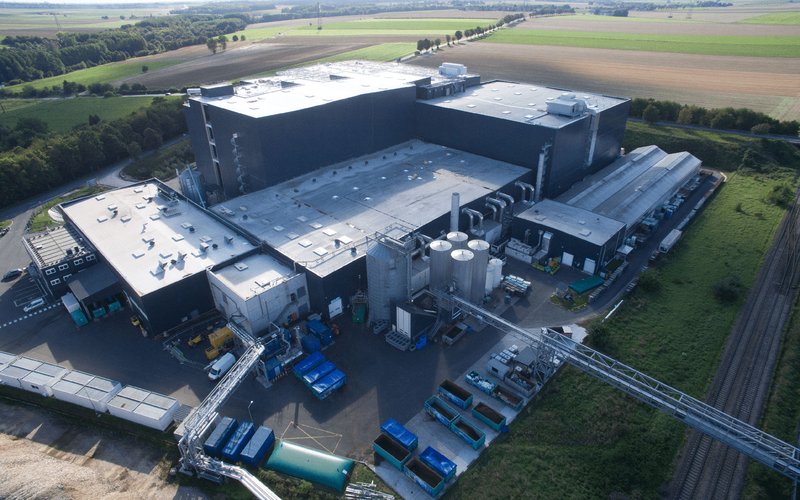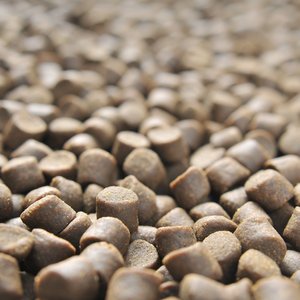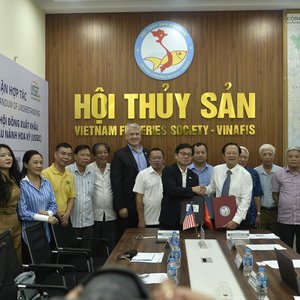Last week, French insect company Ÿnsect filed a safeguard plan as it failed to find enough financing for expansion plans. The insect industry is new and still developing and improving its technology and outputs, but many voices have recently raised concerns over producing insects in Western countries where production costs are too high. As Ÿnsect struggles to maintain the business, Aquafeed.com looked at another big European insect company, Innovafeed, to find out how they are facing these issues.
A symbiosis model
“Innovafeed has developed a highly competitive industrial model that allows us to commercialize products with competitive costs compared to alternatives,” the company said.
The company highlights a few elements key to this success: (i) the choice of the insect species (black soldier fly) which has a short life cycle, high reproductive rate and is a powerful upcycler of low-grade ingredients, (ii) scale as the company is currently ramping up the 3rd phase of its factory which will make them the biggest producer, and (iii) its industrial symbiosis model, which creates significant cost savings by optimizing both the supply of feed for insects and energy use, particularly heat.
“By co-locating our production facilities with major industrial partners, we are able to efficiently recycle byproducts and energy, dramatically lowering operational costs. The automatization of part of our operations is also a key advantage,” the company said.
“In addition to being cost-effective, our model also contributes to a significant reduction in CO2 emissions, making it not only competitive but also sustainable. This dual focus on economic and environmental efficiency positions Innovafeed as a leader in the insect industry, even in regions with higher production costs.”
“For the insect industry, scaling up volumes but also continued improvement of zootechnical performance (FCR, reproduction rates, survival rates, etc.) and operational efficiency and automatization in a context of technology maturation are three important levers to bring costs down both from an OPEX and CAPEX perspective in the coming years. We are only at the beginning of the journey. However, Innovafeed current scale and symbiosis model allow us to be competitive already,” the company said.
Partnerships
As the insect industry is scaling up, partnerships have been crucial, both from a financial and commercial perspective. “As a long-term emerging industry, the insect sector requires significant capital investment upfront. This is why establishing strong commercial partnerships is essential: not only do they validate the potential of the insect industry, but they also provide a secure foundation for future revenue streams and provide comfort to investors,” the company said.
“At Innovafeed, we have secured $1 billion in commercial partnerships with Tier 1 leaders in the agro-industry over the next ten years, notably, with two key partners, ADM and Cargill, who are also industrial shareholders of our company. Their investment and ongoing collaboration demonstrate their confidence in the insect industry's potential and their belief in Innovafeed's industrial model and the expertise of our teams,” the company said.
Going beyond its direct clients is key to gaining momentum, for example, with consumers. Innovafeed has developed a value chain with Auchan that commercializes trout raised in North France and partly fed with insects, under their label “Cultivons le Bon”.
A low-risk strategy
Rather than opting for rapid expansion, Innovafeed has chosen to scale its production site in France through a phased industrial approach. “These carefully defined phases have served as key milestones, allowing the company to progressively increase production volumes. This step-by-step strategy not only reduces risk but also minimizes the capital intensity of each phase, ensuring a more sustainable growth trajectory,” the company said.
“The timing of Innovafeed's Series D fundraising is well-aligned with its strategic roadmap. This approach has already enabled us to achieve significant progress with the expansion of our Nesle site (Phases 1, 2, and 3), positioning us to reach full capacity in France by the end of 2025. Meanwhile, in the US, the launch of our Decatur site, in partnership with ADM—our industrial and commercial partner, as well as a shareholder—is another critical milestone that opens new growth opportunities,” the company concluded.










